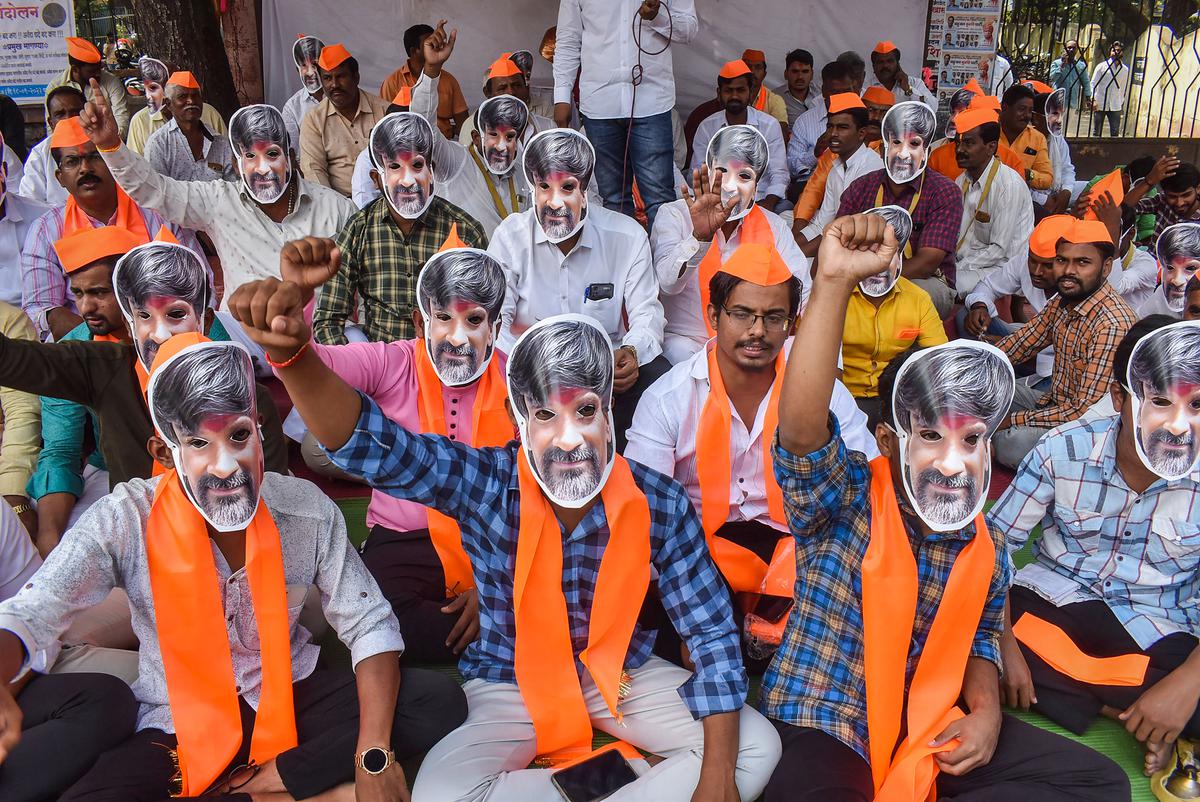Note4Students
From UPSC perspective, the following things are important :
Prelims level: na
Mains level: Maratha mobilization for reservation
![The Marathas' Demand for Reservation: A Litigation History [2014-21] - Supreme Court Observer](https://www.scobserver.in/wp-content/uploads/2021/10/Maratha-Litigation-History-2640-x-1100-px.png)
Central Idea:
- The Maratha community’s demand for reservation in education and employment stems from a crisis of dominance, influenced by urban and rural challenges.
Urban Crisis:
- Well-paid jobs in urban areas, historically held by Marathas, have rapidly disappeared since the late 1990s.
- Large-scale manufacturing industries and establishments providing such jobs have closed or downsized, leading to increased competition for fewer opportunities.
- Marathas, historically socially superior, used their dominant caste position to secure a significant share of jobs, particularly in the public sector.
- Economic liberalization and the shrinkage of public sector jobs have intensified competition among Marathas for limited opportunities.
Rural Crisis:
- Closure of factories has led to the return of workers to villages, disrupting the pattern of workers retiring in villages and their offspring working in cities.
- Rural youth face challenges migrating to urban areas for better-paying jobs, impacting the financial support they traditionally provided to family members in villages.
- Informal sector jobs become the primary option for rural Maratha youth, diminishing their social standing and pride in rural settings.
- The focus on secure public sector jobs, which have also decreased, becomes crucial for rural Maratha youth.

Education Challenges:
- Increased aspirations for higher education among Marathas face a decline in government institutions and a rise in private unaided colleges with exorbitant fees.
- Marathas, with limited financial resources, compete for a limited number of open-category seats in public institutions.
- Decrease in government-run educational institutions exacerbates the challenges faced by Maratha aspirants.
Crisis of Dominance:
- The combination of urban and rural crises contributes to a crisis of dominance for the Marathas.
- Disturbance of caste hierarchy norms due to Dalit mobility and OBC economic and political assertion adds to Marathas’ anxiety.
- The demand for reservation reflects the need for increased formal sector jobs and the expansion of public educational institutions to address the crisis.
Key Highlights:
- Maratha community demands reservation in education and public employment, intensifying since 2016.
- Historically, Marathas dominated well-paid jobs, but recent urban and rural crises have led to increased competition and challenges.
- Closure of manufacturing industries, decreasing public sector jobs, and rural youth’s struggles contribute to the crisis.
- Educational aspirations face challenges with a decline in government institutions and increased private college fees.
Key Challenges:
- Disappearance of well-paid urban jobs, increased competition, and shrinking public sector employment.
- Rural crisis disrupts the traditional pattern of workers retiring in villages and offspring working in cities.
- Decline in government-run educational institutions, limited open-category seats, and rising private college fees.
Key Terms and Phrases:
- Urban crisis, rural crisis, crisis of dominance, economic liberalization, formal sector jobs.
- Reservation, Maratha mobilization, well-paid jobs, private unaided colleges, public sector employment.
Key Examples and References:
- Maratha protests since 2016, closure of manufacturing industries, decreased public sector jobs.
- Disturbance in traditional caste hierarchies due to Dalit mobility and OBC economic and political assertion.
Key Facts and Data:
- Marathas historically occupied over 29% of open-category jobs in government.
- Jobs in the private formal sector increased from 2% to 3.5%.
- Contractual government jobs increased from 0.7 million to 15.9 million in 2017-18.
- Only 22.2% of colleges are managed by the government as of 2019.
Critical Analysis:
- Maratha crisis stems from economic shifts, urban-rural dynamics, and disturbance in caste hierarchies.
- Limited opportunities, competition, and declining public sector jobs contribute to the community’s mobilization.
- Educational challenges add to the complexity, demanding a comprehensive solution.
Way Forward:
- Address urban and rural crises by creating more formal sector jobs.
- Expand public educational institutions and implement large-scale scholarship programs.
- Focus on inclusive policies to reduce competition and restore traditional patterns of employment.
Conclusion:
- The Maratha mobilization for reservation is rooted in the challenges posed by the disappearance of well-paid jobs, urban-rural dynamics, and the disruption of traditional caste hierarchies. Addressing these challenges requires a focus on creating more opportunities in the formal sector and expanding accessible public education.
Get an IAS/IPS ranker as your 1: 1 personal mentor for UPSC 2024
